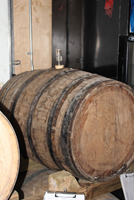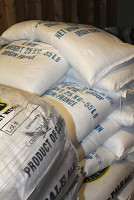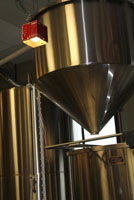Craft beer is not a new thing; it is in fact, just a return to the roots of fermentation. Companies like Molson and Labatt technically started as craft brewers with small batch hand crafted ales and lagers. The art of brewing got lost to the public’s need for beer. Consumers were drinking up supplies so quickly after prohibition was over that recipes were being altered to produce a quicker product. They wanted more, and fast! Over the years we as consumers had gotten used to the cheap and tasteless swill that we were being offered. Craft beer is about altering the recipes into a product that represents those fermenting it. It is about trial and error and experimentation. The head brewer or brewmaster’s preferences and personality should be reflected in the layers of flavour in the beer. Adding your own signature and style to any beverage is what makes it crafted. It is about finding the perfect balance of malt and hop, sweetness and bitterness that makes each recipe unique. Each brew will have their own unique characteristics such as citric, fruity, earthy, mossy, sweet and smokey….there are a million different ways to describe the incredible things that happens to your taste buds when you are sampling craft beer. I have learned so much about the varying characteristics of hop profiles and how even the soil in which these hops and malts have been grown will effect he aromas and flavours of the finished product. British Columbia is proving to be an ideal climate to grow many of these hops and malts as we will learn over the next few years. Some of the hops that are common in BC products and that we can look forward to seeing more of are:
Cascade, Centennial, Citra, Chinook, and Amarillo
The movement towards a crafted beer as opposed to a mass produced one was inevitable. BC is full of artists, writers and open minded people who wanted something more. With such an ideal climate for growing and a proven love for beer, British Columbians started home brewing, networking, learning and growing. It has become a multi-million dollar shift for our province and it is only getting better. These millions are now going into the pockets of hard working British Columbians who are a part of small batch brewing projects. By the end of summer 2016 there should be over 120 operating craft breweries in our beautiful province; see BC Craft Breweries
How is Beer made?
Each style of beer has a slightly different process to make it but it follows these general steps:
- Malted barley and sometimes wheat are soaked in hot water to release the malt sugars (done in a mash ton)
- The malt sugar mash is then boiled with hops to season or taste in a kettle or large pot
- The mash is cooled and yeast is added to begin fermentation, done in conditioning tanks, this is also where we could add some flavours such as coco or sour cherries.
- The yeast ferments the sugars releasing Co2 and ethyl alcohol.
- The fermentation is complete. The beer is then placed into bright tanks to cool and then are kegged and bottled from here. Sometimes extra Co2 must be added and temperature is very important during this time.

Barrel

Bags of Barley

Hopper




